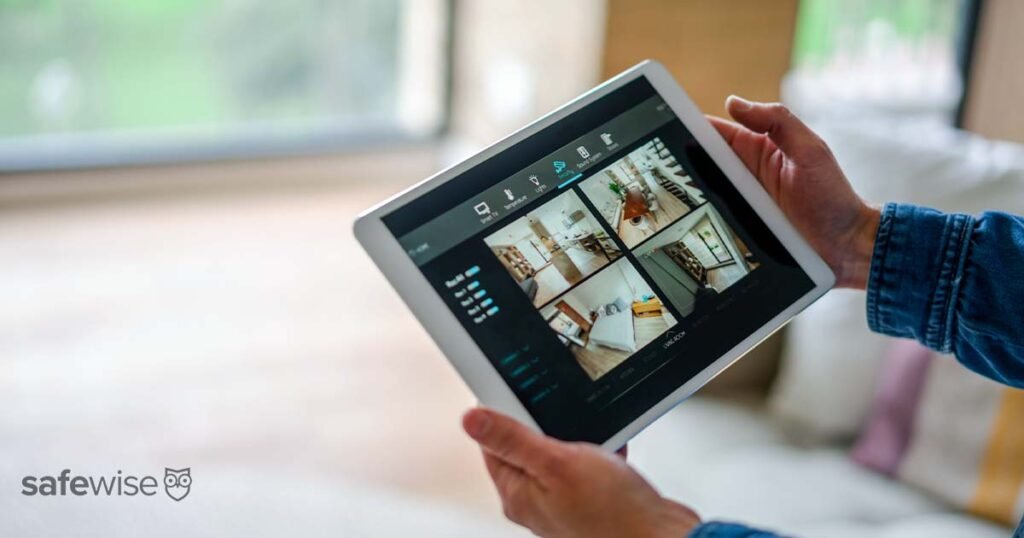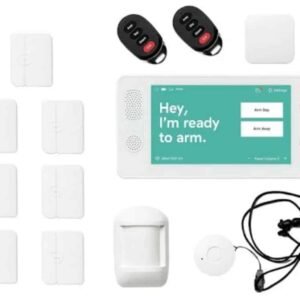Are you looking for a cost-effective and hassle-free way to beef up the security of your home? Look no further than DIY home security systems! These systems offer an affordable alternative to professional installation, allowing you to take matters into your own hands and customize your security setup. With well-known brands like Ring, Nest, and Arlo leading the way, there are plenty of options to choose from. Whether you prefer a wireless system from Wyze or a more advanced setup from SimpliSafe, these DIY options provide flexibility and convenience while still offering the peace of mind you desire. Say goodbye to expensive installations and long-term contracts – it’s time to take control of your home security.
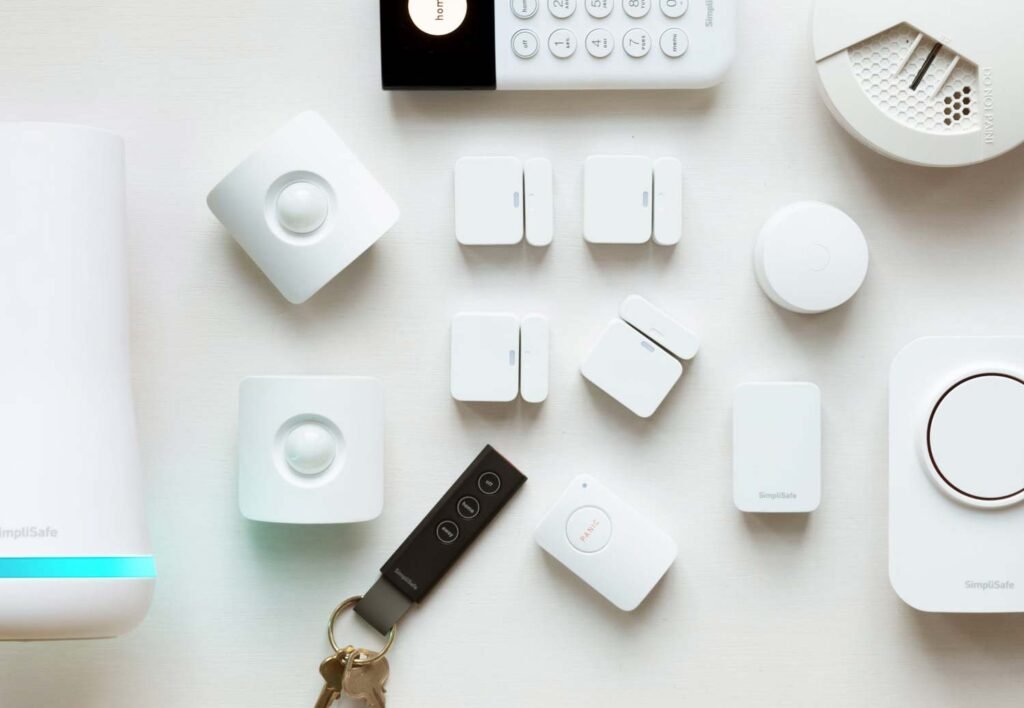
Benefits of DIY Home Security Systems
Cost savings
One of the primary benefits of opting for a DIY home security system is the cost savings it offers. Traditional professionally installed security systems often come with hefty upfront costs, as well as monthly fees for monitoring services. With a DIY system, you have the flexibility to choose equipment at various price points and can avoid ongoing monitoring fees if you prefer to self-monitor your home. This can result in significant cost savings in the long run.
Customization
DIY home security systems allow you to customize your setup according to your specific needs and preferences. Whether you live in a small apartment or a large house, you can choose the components that best suit your space. From selecting the number and type of sensors to installing cameras strategically, you have the freedom to tailor your system to fit your unique requirements.
Ease of installation
Contrary to popular belief, installing a DIY home security system doesn’t require extensive technical knowledge. Most systems are designed with user-friendly interfaces, clear instructions, and intuitive installation processes. You don’t need to be an expert to set up and configure the components. This ease of installation makes it accessible to homeowners who may not have the resources to hire professional installers.
Flexibility
With a DIY home security system, you have the flexibility to make changes and upgrades whenever you need them. If you decide to add more sensors or cameras in the future, you can easily do so without relying on a professional installer. This flexibility allows you to adapt your home security system as your needs change over time.
No contracts
Unlike traditional professionally installed systems that often require long-term contracts, DIY home security systems typically don’t come with binding agreements. This gives you the freedom to discontinue the service or switch to a different provider without any penalties. You have the control to decide when and how you want to use the system without being tied down by contractual obligations.
Types of DIY Home Security Systems
Wireless systems
Wireless home security systems utilize wireless technology, such as Wi-Fi, to connect the various components. These systems are easy to install, as they eliminate the need for extensive wiring throughout your home. They often offer features like remote access and control via mobile apps, making it convenient to monitor your property from anywhere.
Wired systems
Wired home security systems, on the other hand, rely on physical wiring to connect the components. While they may require more installation effort, wired systems are known for their reliability. They are not susceptible to signal interference or hacking, providing a secure and stable connection. Wired systems are often preferred for larger homes or properties where extensive coverage is needed.
Smart home integration
Smart home integration is becoming increasingly popular in the realm of DIY home security systems. These systems allow you to connect your security devices with other smart devices in your home, such as voice assistants, smart lights, and thermostats. This integration enhances overall home automation and convenience, offering a seamless connected ecosystem.
Camera-based systems
Camera-based DIY home security systems focus on video surveillance. These systems typically include security cameras that can be strategically placed around your property to monitor specific areas. Some cameras offer features like motion detection, night vision, and two-way audio. They provide visual evidence of any security incidents and can act as a deterrent to potential intruders.
Sensor-based systems
Sensor-based DIY home security systems rely on different types of sensors to detect and alert you about potential security breaches. These sensors can include door and window sensors, motion sensors, glass break detectors, and more. When triggered, the sensors send alerts to your smartphone or other designated devices, allowing you to take appropriate action.
Key Components of DIY Home Security Systems
Control panel
The control panel is the central hub of your DIY home security system. It allows you to arm and disarm the system, monitor sensor activity, and receive alerts. Modern control panels often feature touchscreens and user-friendly interfaces, making it easy to navigate through the system settings.
Security cameras
Security cameras play a crucial role in monitoring your property. They capture video footage of both indoor and outdoor areas, acting as a visual deterrent and providing evidence in case of a security incident. DIY security camera systems come in various types, including wired and wireless options, with features such as HD resolution, night vision, and cloud storage.
Door and window sensors
Door and window sensors are essential components of any DIY home security system. These magnetic sensors are installed on doors and windows to detect any unauthorized entry. When the sensor is separated, such as when a door or window is opened, it triggers an alert to notify you of potential intrusion.
Motion sensors
Motion sensors detect movement within a specific range and are typically used to safeguard large areas or rooms. When motion is detected, these sensors send alerts and can trigger other actions, such as activating security lights or sounding the alarm. They are useful for both indoor and outdoor security applications.
Alarm system
An alarm system is a vital component of a DIY home security setup. It serves as a deterrent by sounding a loud siren or alarm when a security breach is detected. DIY systems often allow you to customize the alarm sounds and volume to suit your preferences.
Smart locks
Smart locks offer convenience and added security to your DIY home security system. These locks can be remotely controlled using a mobile app, allowing you to lock or unlock your doors from anywhere. Some smart locks also integrate with other devices, such as video doorbells, to provide a seamless connected security experience.
Video doorbells
Video doorbells combine a doorbell with a built-in camera. They allow you to see and communicate with visitors at your front door, even when you’re not home. Video doorbells can send real-time alerts to your smartphone and provide a video feed, enabling you to monitor and interact with anyone who approaches your doorstep.
Smoke detectors
Smoke detectors are essential for early detection of fires and can be integrated into your DIY home security system. These detectors can send alerts and sound the alarm when smoke is detected, giving you valuable time to evacuate and contact emergency services.
Carbon monoxide detectors
Carbon monoxide (CO) detectors are designed to detect the presence of this odorless and potentially deadly gas. CO detectors can be integrated into your DIY home security system to provide an added layer of safety. When elevated CO levels are detected, the detectors can alert you and help prevent carbon monoxide poisoning.
Smart home hubs
Smart home hubs serve as the central control point for various smart devices in your home, including your DIY home security system. These hubs allow you to manage and automate different devices through a single interface. They provide connectivity and compatibility between devices from different manufacturers, creating a cohesive smart home ecosystem.
Popular DIY Home Security System Brands
Ring
Ring is a well-known brand in the DIY home security market, offering a range of products including video doorbells, security cameras, and complete security systems. Their devices are known for their ease of installation and integration with other smart home devices.
Nest
Nest, now under the umbrella of Google, offers a comprehensive lineup of DIY home security products. Their range includes indoor and outdoor security cameras, video doorbells, and smart locks. Nest products are known for their sleek design and integration with the Google ecosystem.
Arlo
Arlo specializes in wireless DIY home security systems, offering a variety of indoor and outdoor cameras, including wire-free and weather-resistant options. Their cameras are known for their high-definition video quality and advanced features like motion detection and night vision.
Wyze
Wyze provides affordable and feature-rich DIY home security solutions. Their product lineup includes indoor and outdoor cameras, as well as sensors and smart locks. Wyze devices offer excellent value for money and integrate with popular smart home platforms.
SimpliSafe
SimpliSafe offers a range of DIY home security products designed for easy installation and flexible customization. Their systems include features such as professional monitoring, cellular connectivity, and smart home integration. SimpliSafe is known for its affordable pricing and user-friendly setup.
Eufy Security
Eufy Security focuses on providing simple and reliable DIY home security solutions. Their product lineup includes security cameras, video doorbells, and sensors. Eufy Security devices offer high-quality video and audio, along with easy installation and integration with voice assistants.
Blink
Blink, owned by Amazon, offers wireless cameras and complete DIY home security systems. Their devices are known for their long battery life, affordable pricing, and seamless integration with other Amazon smart home products.
August Home
August Home specializes in smart locks and video doorbells, enhancing the security and convenience of your DIY home security system. Their products allow keyless entry and remote access control, making it easy to manage access to your home.
Honeywell Home
Honeywell Home provides a range of DIY home security solutions, including cameras, sensors, and alarm systems. Their products are designed for easy installation and integration with other Honeywell smart home devices.
Ring Alarm
Ring Alarm is Ring’s comprehensive DIY home security system that includes a control panel, sensors, and a siren. It offers professional monitoring services and integrates seamlessly with other Ring devices.
Vivint
Vivint offers a range of DIY home security products, including cameras, sensors, and smart locks. Their systems are known for their professional monitoring services and seamless integration with home automation features.
Abode
Abode provides flexible and customizable DIY home security systems, allowing you to choose the components that best suit your needs. Their systems offer features such as professional monitoring, cellular connectivity, and smart home integration.
Swann
Swann specializes in camera-based DIY home security systems, offering a range of wired and wireless cameras with advanced features like facial recognition and wide-angle lenses. Their systems provide high-quality video footage and easy installation.
Reolink
Reolink offers a variety of DIY home security cameras, including wire-free and PoE (Power over Ethernet) options. Their cameras are known for their high-resolution video, night vision capabilities, and intuitive mobile app.
TP-Link Kasa
TP-Link Kasa provides a range of affordable DIY home security cameras, including indoor and outdoor options. Their cameras offer features like 2K resolution, wide-angle lenses, and two-way audio. TP-Link Kasa devices integrate with popular smart home platforms.
Logitech Circle
Logitech Circle offers both wired and wireless DIY home security cameras. Their cameras provide HD video, night vision, and two-way audio capabilities. Logitech Circle devices can be set up easily and integrate with popular smart home ecosystems.
ADT
ADT, a well-established name in the professional security industry, also offers DIY home security solutions. Their products include cameras, sensors, and alarm systems, providing options for both self-monitoring and professional monitoring services.
Schlage
Schlage specializes in smart locks and offers a range of DIY products that integrate with leading home security systems. Their smart locks provide keyless entry, versatile access control options, and compatibility with voice assistants.
First Alert
First Alert provides a range of DIY home security products, including smoke detectors and carbon monoxide detectors. Their devices offer reliable detection and integration with other smart home systems.
Kangaroo
Kangaroo focuses on providing affordable and simple DIY home security solutions. Their product lineup includes wireless sensors, security cameras, and a hub that connects and manages the devices. Kangaroo devices offer easy setup and integration with Alexa and Google Assistant.
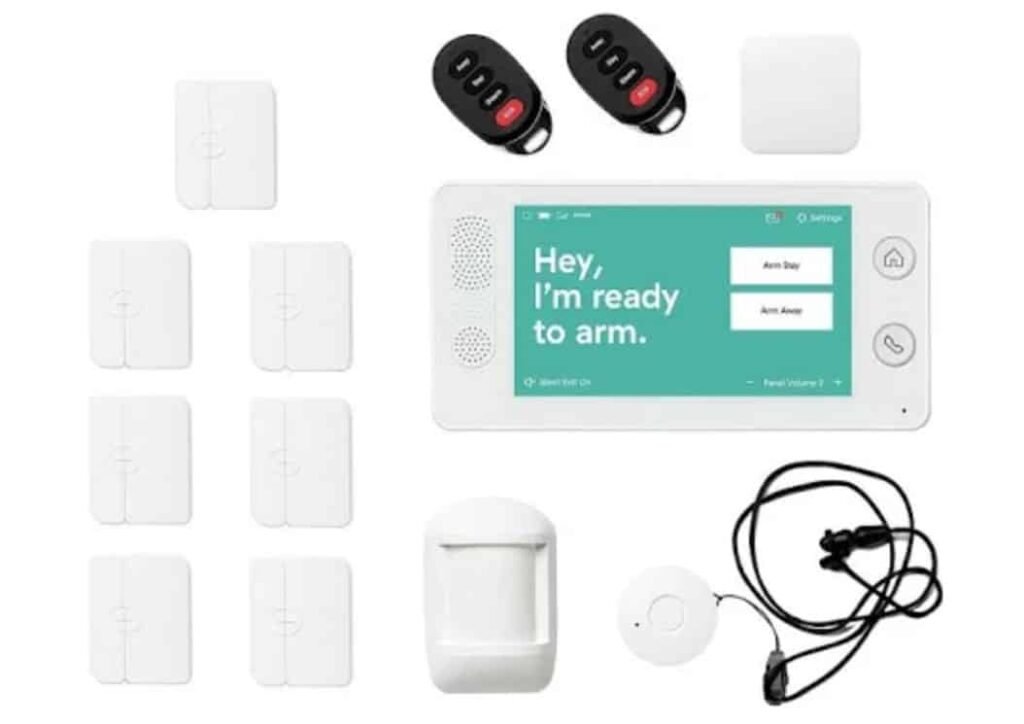
Factors to Consider when Choosing a DIY Home Security System
Budget
Consider your budget when choosing a DIY home security system. Determine how much you are willing to spend on equipment, installation, and any ongoing monitoring services. It’s important to strike a balance between your desired level of protection and what you can afford.
Coverage area
Evaluate the size and layout of your property to determine how many sensors and cameras you will need to adequately cover the areas you want to monitor. Consider both indoor and outdoor spaces, as well as any perimeter or entry points that may require additional sensors.
Scalability
Consider whether the DIY home security system you choose allows for scalability. If you anticipate expanding or upgrading your system in the future, ensure that the system can accommodate additional components without unnecessary complexity.
Integration with existing devices
If you already have other smart home devices, check if the DIY home security system you are considering integrates with your existing devices. This compatibility can enhance the overall functionality and convenience of your smart home ecosystem.
Monitoring options
Decide whether you prefer self-monitoring or professional monitoring for your DIY home security system. Self-monitoring allows you to receive alerts and take action on your own, while professional monitoring involves a third-party service that monitors your system and dispatches authorities when necessary.
Mobile app functionality
Consider the features and functionality of the mobile app provided with the DIY home security system. Look for features like remote access, real-time alerts, and the ability to control and manage your system from anywhere.
Video storage
If you opt for a DIY home security system with cameras, consider how the video footage is stored. Some systems offer local storage options, while others rely on cloud storage. Evaluate the storage capacity and any associated costs or limitations.
Customer support
Research the customer support options provided by the DIY home security system brand. Look for accessible and responsive customer service channels, such as phone, email, or chat support. Good customer support can be crucial when you need assistance with installation, troubleshooting, or system maintenance.
User reviews and ratings
Read user reviews and ratings of the DIY home security system you are considering. Pay attention to feedback regarding ease of installation, performance, reliability, and customer support. User reviews can provide valuable insights into the overall user experience with the system.
Installation complexity
Consider your own technical capabilities and confidence when evaluating the installation complexity of a DIY home security system. Choose a system that aligns with your skill level and provides clear instructions or resources to help you with the installation process.
Installation Process for DIY Home Security Systems
Planning and research
Before diving into the installation process, take the time to plan and research your DIY home security system. Assess your security needs, determine the areas you want to monitor, and research the specific components that would best suit your requirements.
Choosing the right system
Based on your planning and research, select a DIY home security system that aligns with your needs and preferences. Consider factors such as range, connectivity options, resolution, and compatibility with other devices. Read reviews and compare different options before making a decision.
Purchasing equipment
Once you have chosen a DIY home security system, purchase the necessary equipment and ensure you have everything you need for installation. Review the included components and any additional accessories or tools you may require.
Setting up the control panel
Follow the manufacturer’s instructions to set up the control panel of your DIY home security system. This typically involves connecting it to a power source and your home network. Configure any necessary settings, such as Wi-Fi credentials, time zones, and user preferences.
Installing security cameras
If your system includes security cameras, determine the optimal locations to install them. Ensure your cameras provide coverage of the desired areas while considering factors such as height, angle, and potential obstructions.
Mounting sensors
Install door and window sensors in the designated areas according to the manufacturer’s instructions. Check that the sensors are securely mounted and aligned properly to ensure accurate detection.
Connecting to the network
Connect each component of your DIY home security system to your home network. This may involve scanning QR codes, entering serial numbers, or following specific pairing or synchronization processes as outlined in the manufacturer’s instructions.
Testing and troubleshooting
After installation, thoroughly test each component of your DIY home security system to ensure proper functionality. Verify that sensors trigger alerts, cameras capture clear footage, and all devices can be controlled through the mobile app or control panel. Address any issues or troubleshooting needs that arise.
Finalizing the system
Once you have tested and verified the functionality of your DIY home security system, make any necessary adjustments or optimizations. This may include adjusting camera angles, fine-tuning sensor sensitivity, or configuring additional settings based on your preferences.
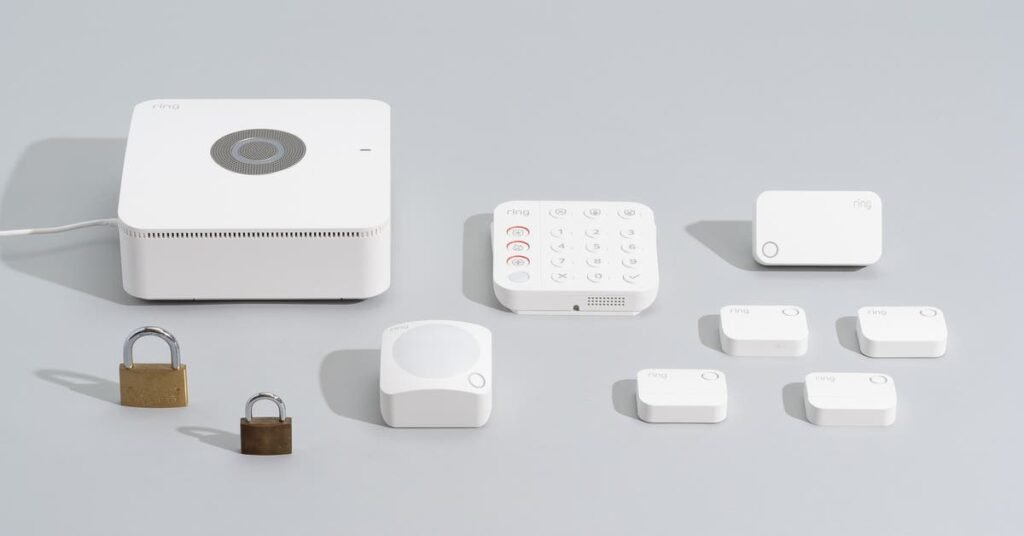
Challenges and Limitations of DIY Home Security Systems
Technical expertise
While DIY home security systems are designed with user-friendly interfaces, some technical knowledge may still be required during installation and troubleshooting. It’s important to be comfortable following instructions, handling basic tools, and setting up network connections.
Limited professional support
Unlike professionally installed systems that often include extensive customer support and professional assistance, DIY home security systems may have limited professional support options. It’s essential to be prepared to troubleshoot and resolve any issues on your own or rely on online resources and user communities for support.
Potential issues with compatibility
When choosing a DIY home security system, compatibility with other devices, both within the system and in your existing smart home ecosystem, can be a potential challenge. Ensure that the system you select integrates seamlessly with the devices you already have or plan to incorporate in the future.
False alarms
DIY home security systems are not immune to false alarms, which can be triggered by factors like pet movements, environmental variations, or even user error. Minimize false alarms by fine-tuning sensor sensitivity, placing sensors strategically, and familiarizing yourself with best practices for system usage and maintenance.
Maintenance and system updates
DIY home security systems require regular maintenance to ensure optimal performance. This includes replacing batteries in sensors, cleaning cameras and lenses, and keeping the system’s firmware and software up to date. Stay proactive in maintaining your system to avoid potential security vulnerabilities or system malfunctions.
DIY repairs
In the event of a malfunction or component failure, DIY home security systems often require DIY repairs. This may involve troubleshooting hardware or software issues and ordering replacement parts. Consider your comfort level with DIY repairs and your willingness to invest time and effort into maintaining your system.
Security vulnerabilities
While DIY home security systems are designed with security in mind, they can still be vulnerable to hacking or system breaches if not properly configured or updated. Ensure that your system has robust security features, follow recommended security practices, and stay up to date with software and firmware updates to mitigate these risks.
Insurance considerations
If you rely solely on a DIY home security system for home protection, note that it may impact your insurance coverage and premiums. Some insurance providers offer discounts for professionally monitored systems or specific security certifications. Consult with your insurance provider to understand the implications and any requirements for coverage.
Comparison with Professional Installation
Cost comparison
DIY home security systems generally offer cost savings compared to professionally installed systems. With DIY systems, you have more control over the upfront costs and can choose equipment at different price points. Additionally, you have the option to self-monitor, eliminating the need for monthly monitoring fees.
Installation complexity
Professional installation involves trained technicians who handle the entire installation process for you. This can be advantageous if you are not comfortable with technical tasks or if your home requires complex wiring or configuration. DIY installation, on the other hand, can usually be done by the homeowner with basic tools and skills.
Customization options
DIY home security systems offer greater customization options compared to professionally installed systems. With DIY systems, you can choose the specific components that meet your needs and install them in the locations that provide the best coverage. Professionally installed systems may have more limited options for customization.
Monitoring services
Professionally installed systems often come with the option of professional monitoring services. These services involve a third-party monitoring center that receives alerts and dispatches authorities when necessary. DIY systems may offer self-monitoring or the option to pay for professional monitoring services.
Maintenance and support
Professionally installed systems often come with dedicated customer support and maintenance services. If any issues arise, you can rely on trained technicians to address the problem. DIY systems may have more limited professional support options and require the homeowner to take on maintenance tasks themselves.
Integration with other systems
Both DIY and professionally installed systems can integrate with other smart home devices. However, professionally installed systems often have more comprehensive integrations due to partnerships and established relationships between manufacturers. DIY systems may require more research and configuration to achieve seamless integration.
Professional recommendations
When professionally installing a home security system, technicians can provide expert recommendations based on their experience and knowledge. They can assess your home’s unique needs and suggest appropriate solutions. DIY systems may require more independent research and decision-making.
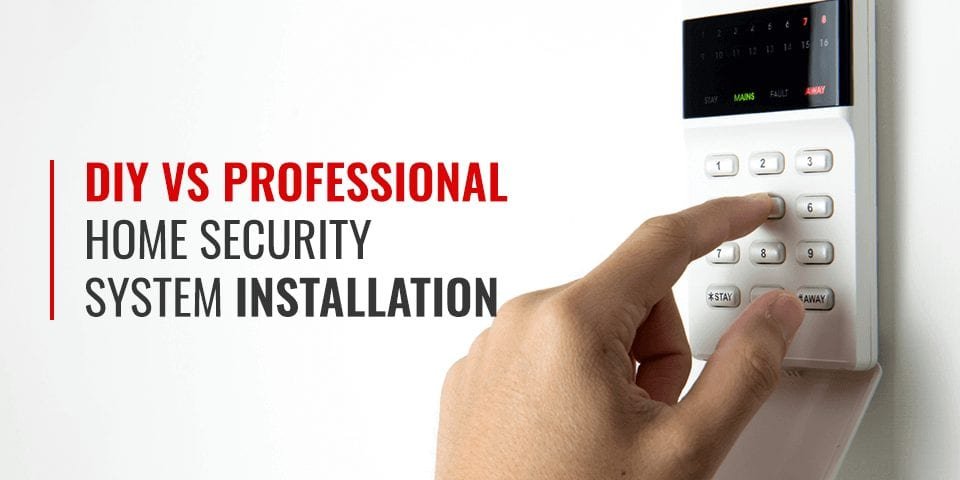
Tips for Maximizing the Effectiveness of DIY Home Security Systems
Perform a thorough security assessment
Before installing a DIY home security system, conduct a comprehensive security assessment of your property. Identify potential vulnerabilities and areas of concern, such as unsecured entry points or blind spots. This assessment will guide you in determining the components and placement needed for optimal security coverage.
Strategically place security cameras
When installing security cameras, carefully consider their placement. Aim to cover entry points, high-traffic areas, and areas of concern. Position cameras at a height that provides optimal coverage and consider factors such as lighting conditions, potential obstructions, and angle of view.
Install security signage
Visible security signage can act as a deterrent to potential intruders. Display signs or stickers indicating the presence of a DIY home security system on your property. This can help discourage burglars and signal that your home is protected.
Combine different security measures
Enhance the effectiveness of your DIY home security system by combining different security measures. For example, pairing motion sensors with security cameras can provide comprehensive coverage. Consider additional measures like outdoor lighting, door reinforcement, and secure locks to further enhance your home’s security.
Regularly test the system
Periodically test your DIY home security system to ensure all components are functioning correctly. Test sensors, cameras, and the alarm system to verify their responsiveness. Regular testing helps identify any issues and gives you peace of mind that your system is ready to defend your home when needed.
Keep software and firmware updated
Stay up to date with the latest software and firmware updates from the manufacturer of your DIY home security system. These updates often include security patches, bug fixes, and new features that can enhance the performance and reliability of your system.
Secure your network
Ensure the network you connect your DIY home security system to is secure. Change default passwords, enable encryption, and regularly update the firmware on your router. Taking these steps helps protect your system from unauthorized access and ensures the privacy of your data.
Notify and train family members
Inform family members and household occupants about the workings of your DIY home security system. Everyone should be familiar with arming and disarming the system, responding to alerts, and understanding basic troubleshooting steps. Regularly remind family members of the importance of your home’s security and the role they play in maintaining it.
Conclusion
DIY home security systems are a cost-effective alternative to professional installation, offering numerous benefits such as cost savings, customization options, and ease of installation. With a wide range of DIY home security system brands available, including Ring, Nest, Arlo, Wyze, and many more, homeowners have plenty of options to choose from based on their specific needs and preferences. By considering factors like budget, coverage area, and integration with existing devices, homeowners can select the right DIY home security system to protect their property. While DIY systems come with their challenges and limitations, such as technical expertise requirements and potential compatibility issues, they offer a viable option for those who prefer a hands-on approach to home security. By following best practices and maximizing the effectiveness of DIY home security systems through assessments, strategic camera placement, and regular testing, homeowners can create a comprehensive security solution for their homes. Ultimately, whether to choose DIY or professional installation depends on individual circumstances and requirements, but DIY home security systems provide an accessible and affordable option for homeowners looking to protect their properties and loved ones.
